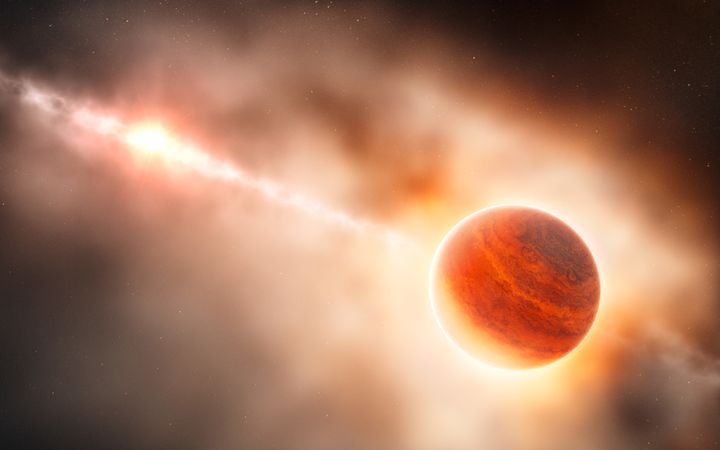A team of astronomers has discovered at least one, but likely two, Jupiter-like planets that are still in the process of being born some 335 light-years away.
The "nursery" is home to the developing planets -- each surrounded by "natal clouds of gas and dust" -- and is helping astronomers understand what other, more developed exoplanet systems looked like in their adolescence.
A research team had already confirmed the existence of the first planet -- known as HD 100546 b -- when evidence of a disk of material around the planet tipped them off that it was still forming, said lead investigator Thayne Currie, whose paper on the discovery was published last month in
And now, the team believes it has found a second actively forming planet.

Currie said the system surrounding HD 100546 is a sort of "evolutionary precursor" to HR 8799, the first multiple-planet system to be directly imaged after it was discovered in 2008. The main difference between the systems, however, is that HR 8799's planets are fully formed.
"Now, seven years later, we can for the first time see what this planetary system may have looked like while the planets were just coming into existence," Currie, who is based at the Subaru Observatory on Hawaii's Mauna Kea, said in a release announcing the discovery.

Astronomers spotted the nursery with the Gemini South telescope in Chile -- and as they continue to examine the system, they believe they may discover additional young stars.
"For HD 100546, its spiral arms may suggest the presence of additional planets," Ryan Cloutier, University of Toronto graduate student and a co-author of the research, said in a statement. "In fact, one of the observed protoplanets might instead be a hotspot within the disk or a signpost of an unseen protoplanet."
A protoplanet is a planet in an initial stage of formation.
Studying the nursery is important because astronomers have a hard time predicting exactly what a system of infant planets will look like, Currie told HuffPost.
Generally, he said, astronomers think gas giant planets like Jupiter form by accreting, or accumulating, gas from the surrounding disk material. So in this particular case, he added, scientists "might not only be seeing planet formation at different locations from a star, but at different stages."
The planets forming around HD 100546 aren't the only youngsters being studied. A team of international astronomers are watching the birthing process of LkCa 15 b, located about 450 light-years from Earth.
Also on HuffPost:
